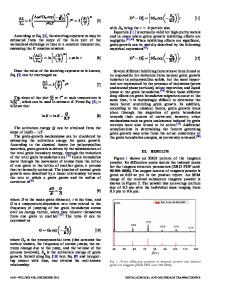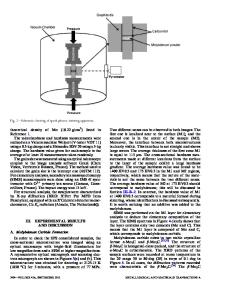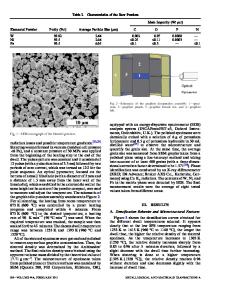Electromigration-Enhanced Densification Kinetics During Spark Plasma Sintering of Tungsten Powder
- PDF / 2,710,716 Bytes
- 12 Pages / 593.972 x 792 pts Page_size
- 27 Downloads / 377 Views
SPARK plasma sintering (SPS) is able to efficiently densify a wide variety of materials[1–4] while preserving a fine-grained microstructure that traditional sintering techniques are unable to attain. The excellent sintering performance of SPS stems from its unique heating mode and rapid densification accelerated by electric field.[5] However, on account of the complex thermal–electric phenomena, the rapid densification mechanisms of SPS are still obscure and on several occasions controversial. A thorough understanding of densification mechanisms is crucial for realizing the technical potential in practical applications of SPS. The unique feature of SPS lies in the function of electric current, including thermal and nonthermal effects in densification. The thermal effect of electric current, also known as Joule heat, is the main SHENGHUA DENG is with the State Key Laboratory of Powder Metallurgy, Science and Technology on High Strength Structural Materials Laboratory, Central South University, Changsha 410083, P.R. China and also with the School of Material Science and Engineering, Jiangxi University of Science and Technology, Ganzhou, 341000, P.R. China. RUIDI LI, TIECHUI YUAN, and SIYAO XIE are with the State Key Laboratory of Powder Metallurgy, Science and Technology on High Strength Structural Materials Laboratory, Central South University. Contact e-mail: [email protected] PENG CAO is with the Department of Chemical and Materials Engineering, University of Auckland, Private Bag 92019, Auckland 1142, New Zealand and also with the MacDiarmid Institute for Advanced Materials and Nanotechnology, PO Box 600, Wellington 6140, New Zealand. Manuscript submitted October 14, 2018.
METALLURGICAL AND MATERIALS TRANSACTIONS A
contributor to densification and has been well documented.[6,7] However, the nonthermal contributions of electric current to the densification for conductive materials during current-assisted sintering are not well understood, and on many occasions they are controversial.[8–11] This is because it is difficult to technically distinguish the effect of Joule heating from the intrinsic role of current (electric field) (i.e. nonthermal effects) on the enhanced densification. In addition, the heating mode is different depending on whether the powder is electrically conductive or insulating.[12] Another technical difficulty is associated with the fact that, under the typical processing conditions of SPS, the temperature and current (electric field) are not independent parameters. Frei et al.[13] and Toyofuku et al.[14] reported that the pulse current accelerated the interparticle neck growth and attributed it to the nonthermal effects of current. It is clear that the intrinsic nonthermal effects of current are the indispensable role in the rapid densification of SPS. However, the traditional theoretical framework based on hot pressing of powder materials is unable to reveal the intrinsic contribution of electric current on densification during current-assisted sintering, although researchers have confirmed that current indeed contri
Data Loading...











